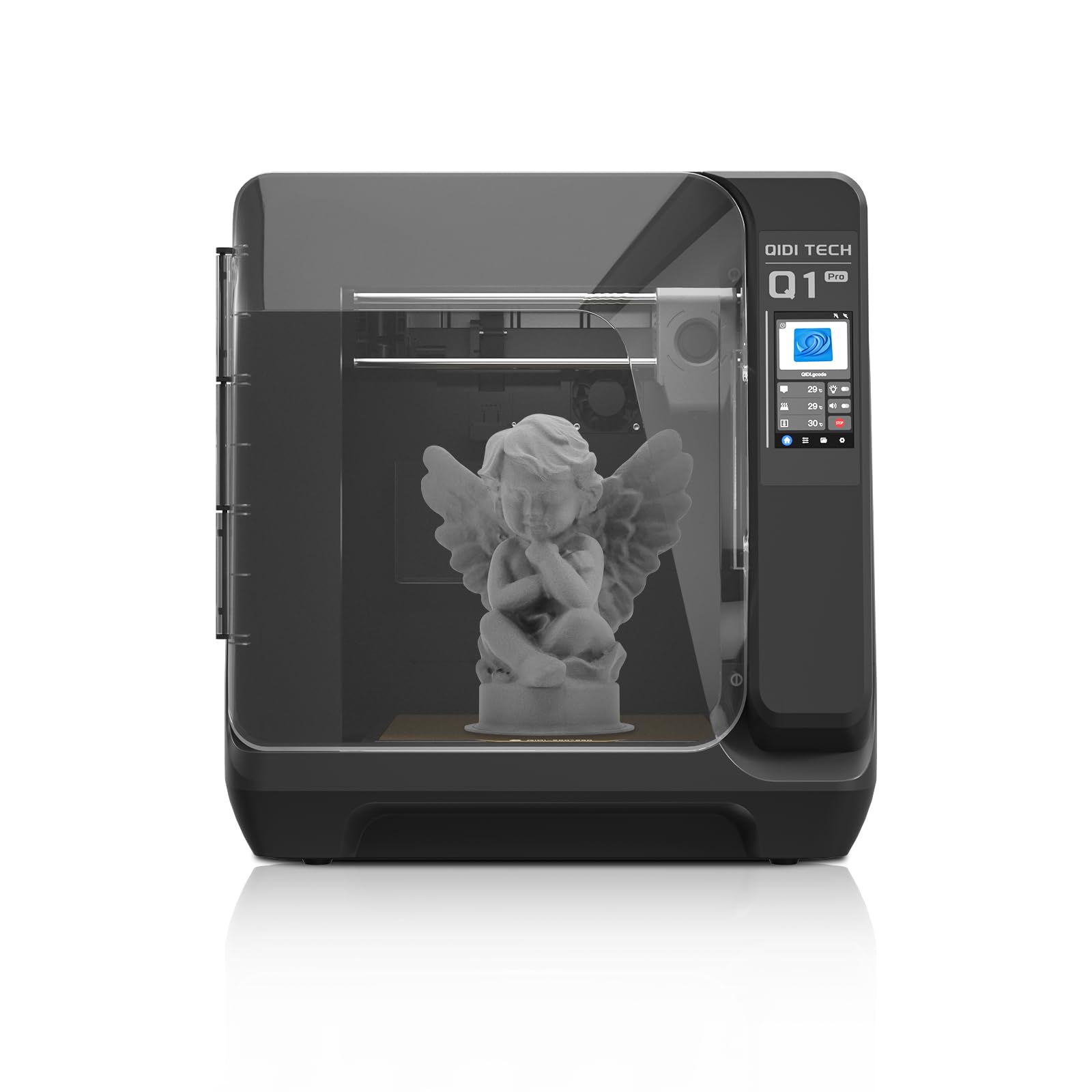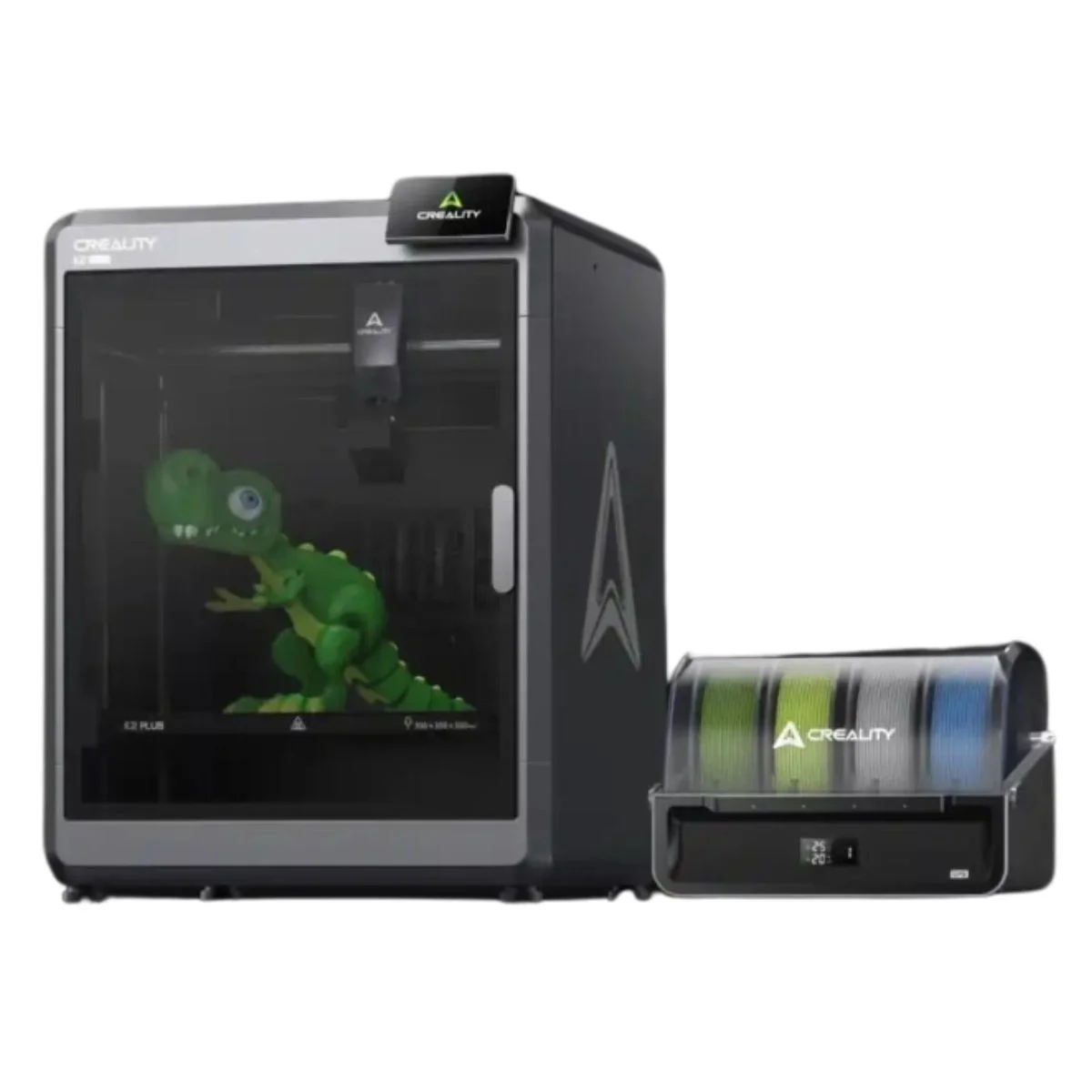Compare Q1 PRO vs K2 Plus
Comparison between the best 3D printers
Choose the best 3D printer at the best price. The cheapest 3D printers are here.
Buy a 3D printer here with 3D Fila.
 |
 |
|
| Model | Q1 PRO[BUY Q1 PRO] |
K2 Plus[BUY K2 Plus] |
| Printing Material | Filament | Filament |
| Buy Filament for QIDI Q1 PRO | Buy Filament forCreality K2 Plus | |
| Estimated price | $449,00 | $1500,00 |
| Manufacturer | QIDI | Creality |
| Release Year | 2024 | 2024 |
| Print Volume [mm] | 245x245x245 | 350x350x350 |
| Printer Size [mm] | 467x477x489 | 495x515x640 |
| Weight [kg] | 20 | 33,5 |
| Power Loss Recovery | YES | YES |
| Enclosed printer | YES | YES |
| Bed Leveling | Automatic | Automatic |
| Filament End Sensor | YES | YES |
| Bed type | Heated | Heated |
| Power supply system | Direct Drive | Direct Drive |
| Standard nozzle | 0,4 | 0,4 |
| Maximum Nozzle Temperature [°C] | 350 | 350 |
| Maximum Bed Temperature [°C] | 120 | 120 |
| Maximum printing speed [mm/s] | 600 | 600 |
| Filament holder | YES | YES |
| Camera for supervision | YES | YES |
| Recommended filaments | PLA、ABS、ASA、PETG、TPU、PC、PA、PA-CF、PET-CF、PAHT-CF etc. | PLA, PETG, PET, TPU, PA, ASA, PC, PLA CE, PA-CF, PET-CF |
| Recommended slicers | QIDI Slicer/Cura/Simplify 3D/ORCA/PRUSA Slicer | Creality Print 5, Bambu Studio, Super Slicer, Cura, Prusa Slicer, Orca Slicer |
| Maximum Resolution [mm] | 0,1 | 0,1 |
| Processor | Cortex-A53,64-bit Processor | |
| Display | Touchscreen 4,3'' | Touchscreen 4,3'' |
| Power Supply | 350 W | 1200 W |
| Connectivity | WiFi/USB Flash Drive/Ethernet Cable | USB / WIfi |
| Operating systems | Windows, Linux, Macbook | Windows, Linux, Macbook |
| Date of registration in the system | 2024-07-09 | 2024-06-26 |
| Release date | 2024 | 2024 |
| Extra features | The QIDI Q1 Pro 3D printer stands out for its Core XY structure and heating chambers that reach up to 60ºC, ideal for advanced materials such as ABS and Nylon. It features Klipper firmware, an automatic leveling system, a high-flow extruder with a double metal nozzle and a hotend that reaches 350ºC. It offers connectivity via Wi-Fi, USB and Ethernet, as well as a 1080p camera for remote monitoring and an intuitive touchscreen for easy operation. | The Creality K2 Plus 3D Printer stands out for its multicolor printing, large build volume (350x350x350 mm) and Apus Direct Drive extruder with tri-metal protection nozzle. It features automatic anti-tilt leveling, FOC closed-loop motors and active chamber heating. In addition, it has an intelligent CFS filament management system, cameras for calibration and monitoring, a 4.3-inch touchscreen and advanced sensors to optimize the printing process. |
| Support for multiple colors and materials (AMS and CFS) | NO | YES |
Notes * |
||
| Cost-benefit | 8 / 10 | 7 / 10 |
| Hardware | 5.4 / 10 | 7.2 / 10 |
| Tela | . | . |
| Print volume | 3 / 10 | 4 / 10 |
| Performance | 5 / 10 | 5 / 10 |
| [BUY Q1 PRO] | [BUY K2 Plus] |
Conclusion |
| In comparing the QIDI Q1 Pro and the Creality K2 Plus 3D printers, several key factors emerge that can help prospective buyers make an informed decision. The **QIDI Q1 Pro** offers an impressive range of features for its price point. It includes a robust build with automatic bed leveling, a heating chamber suitable for advanced materials, and a high-flow extruder. Additionally, it is more compact and lighter, making it a better option for users with limited space. The Q1 Pro also supports a variety of filaments, enabling versatility in printing applications. However, it does not support multicolor printing, which may limit some users. On the other hand, the **Creality K2 Plus** presents a larger build volume, which is advantageous for those looking to print larger models. Its advanced features include multicolor printing capabilities, making it suitable for complex projects, alongside intelligent filament management. The K2 Plus’s hardware is slightly more advanced, specifically with its Apus Direct Drive extruder and closed-loop motors, enhancing overall performance and reliability. However, this performance comes at a significantly higher price point. Ultimately, if budget is a key concern, the QIDI Q1 Pro stands out as an excellent value for quality and feature set. Conversely, if printing larger models or utilizing multicolor capabilities is a priority and budget allows, the Creality K2 Plus could be the right choice despite the higher investment. It is essential for buyers to weigh their specific needs against the offered features to determine the best fit for their 3D printing endeavors. |

